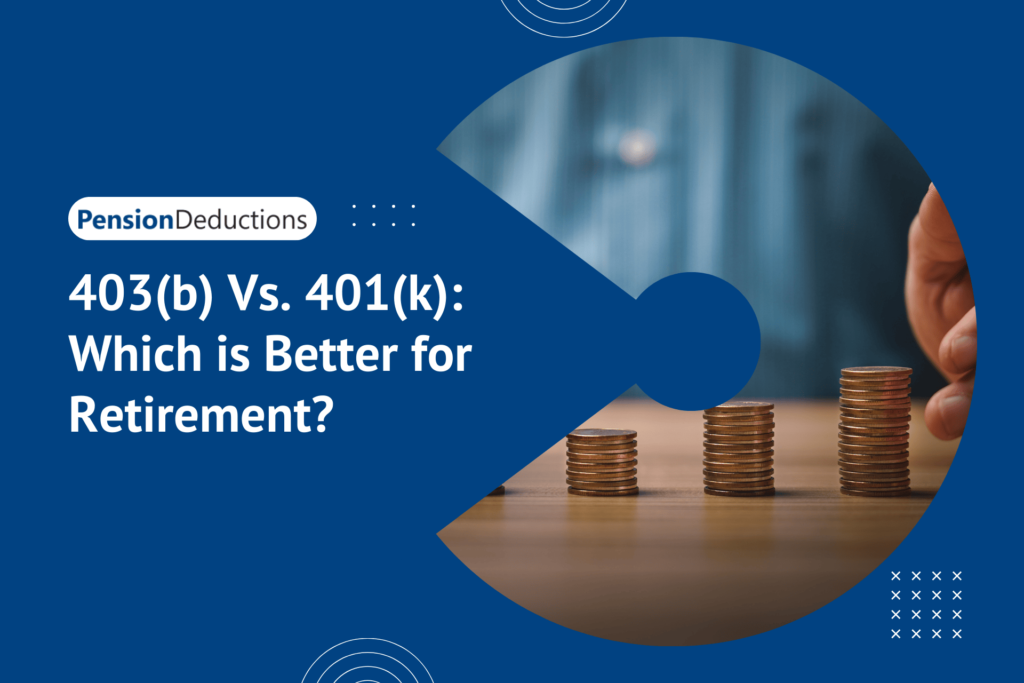403b vs 401k: What's the Difference?
What is a 403(b)?
What is a 401(k)?
Key Differences Between 403(b) and 401(k)

Eligibility Criteria
The eligibility criteria for a 403b vs 401k are one of the most significant differences. A 403(b) plan is available to employees of public schools, nonprofit organizations, and specific religious groups. For example, teachers, hospital workers, and employees of charitable organizations typically have access to 403(b) plans.
On the other hand, a 401(k) plan is offered primarily by private-sector employers, including businesses and corporations, making it accessible to a broader audience, including employees in various industries like technology, finance, and retail.
Contribution Limits
Both the 403(b) and 401(k) have the same annual contribution limits set by the IRS. As of 2024, the contribution limit is $23,000 for employees under age 50 and $30,500 for employees aged 50 and over, thanks to the catch-up contribution provision.
Where the difference lies is in an additional catch-up contribution available to 403(b) participants who have at least 15 years of service with their employer. They can contribute an extra $3,000 annually on top of the standard catch-up contribution, up to a maximum lifetime limit of $15,000. This feature is not available in a 401(k).
Employer Contributions
In a 401(k), it is common for employers to offer matching contributions, often up to a certain percentage of the employee's salary. This is a significant benefit for employees because it essentially provides "free money" toward their retirement savings. The amount of the match and how it vests can vary by company.
For a 403(b), employer matching contributions are less common but still possible, particularly in large nonprofit organizations. However, one significant advantage of the 403(b) plan is that it often has a faster vesting schedule than a 401(k), meaning employees can access their employer contributions more quickly.
Investment Options
When considering investment options in the 403b vs 401k debate, it's essential to know that the types of investments available in each plan can differ.
403(b) Investment Options:
Traditionally, 403(b) plans have been limited to annuities and mutual funds. However, over time, the investment options in 403(b) plans have expanded. Today, many 403(b) plans also offer a variety of mutual funds and, in some cases, allow access to broader investment portfolios. However, the fees associated with annuities in a 403(b) can be higher than mutual funds in a 401(k).
401(k) Investment Options:
401(k) plans generally offer more diverse investment choices compared to 403(b) plans, such as stocks, bonds, mutual funds, and even company stock options in some cases. This greater flexibility can make a 401(k) more appealing for those looking to have a more hands-on approach to their investments.
Administrative Costs
Administrative costs are another crucial factor to consider when comparing 403b vs 401k plans. Typically, 403(b) plans have lower administrative costs because they are often more simplified and can have fewer investment options. Many 403(b) plans also allow employees to self-direct their investments with lower management fees.
On the other hand, 401(k) plans tend to have higher administrative fees, especially if they offer a broad range of investment options. These fees can eat into your retirement savings over time, so it's essential to review the plan's fee structure before enrolling.
Plan Fees
Fees associated with a retirement plan can significantly impact your overall returns. In a 403(b) plan, fees tend to be lower, especially when the investments are restricted to annuities and mutual funds. However, some 403(b) plans may charge higher fees if the plan includes high-cost insurance products like annuities.
In contrast, 401(k) plans often have a broader range of investments, but the plan fees can be higher due to the diversity of the offerings and plan complexity. Many employers, however, try to negotiate lower fees for their employees.
Catch-Up Contributions
Both 403(b) and 401(k) plans offer catch-up contributions for employees over 50, allowing them to contribute an extra $7,500 in 2024. However, as mentioned earlier, 403(b) plans also have the additional catch-up provision for employees with 15 or more years of service with the same employer.
Withdrawal Rules
Both 403(b) and 401(k) plans impose penalties for withdrawals made before age 59½. If you withdraw funds early, you'll generally be subject to a 10% early withdrawal penalty plus income taxes on the amount withdrawn.
One major difference, however, lies in how required minimum distributions (RMDs) are treated. Both plans require RMDs to start at age 73, but there are exceptions for 403(b) plan participants who work for religious organizations. In some cases, clergy members can delay RMDs from a 403(b).
Loans and Hardship Withdrawals
Both the 403(b) and 401(k) allow participants to take loans from their retirement accounts, with limits usually capped at the lesser of $50,000 or 50% of the vested account balance. Hardship withdrawals are also permitted under certain circumstances, such as significant financial need, but they come with penalties and taxes.
One unique feature of the 403(b) plan is that it is more lenient when it comes to hardship withdrawals. These withdrawals can sometimes be easier to qualify for than those in a 401(k), making a 403(b) more attractive to employees who may need emergency access to funds.
Schedule a Free Consultation Now!
Advantages of 403b vs 401k
403b
401k
Recent Trends and Legislative Updates
The increase in catch-up contributions for individuals over 60 starting in 2025.
Automatic enrollment for new employees in both 403(b) and 401(k) plans.
Increased incentives for employers to offer matching contributions.
Conclusion
In either case, it’s essential to evaluate your financial situation, employment longevity, and retirement goals when deciding between these two plans. Whether you’re deciding between a 403b vs 401k, understanding the differences and potential benefits of each will help you make the right choice for your future.
SHARE THIS POST
Discover the 3 retirement rule changes in 2025, including contribution limits, RMD updates, and automatic portability. Plan smarter today!
Year-end financial planning in the USA helps optimize retirement savings, reduce taxes, and secure your future with proactive strategies.
Explore the IRS Contribution Limits 2025 and learn how inflation adjustments can maximize retirement savings for individuals and employers alike.
Discover the new 401k limits in 2025, maximize your retirement savings, and secure a financially stable future.


